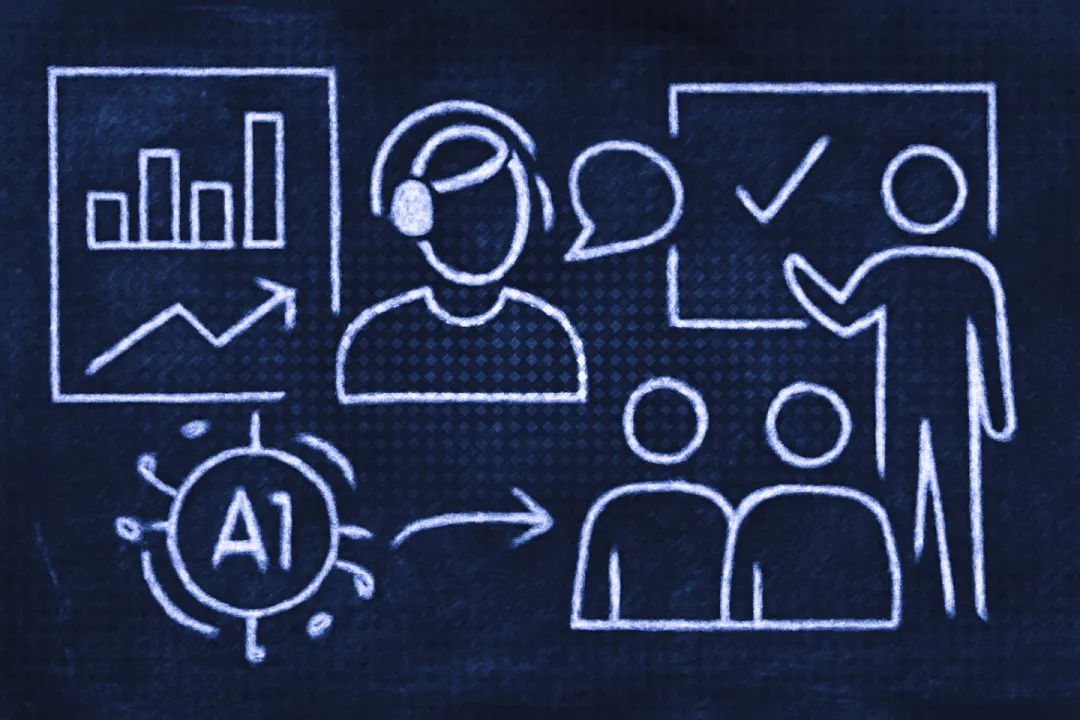
Beyond Scorecards: Turning AI QA Insights into Training and Coaching
How to leverage the rich insights from AI-based call audits to design better training programs and personalized coaching for call center agents.
Beyond Scorecards: Turning AI QA Insights into Training and Coaching
Quality Assurance (QA) in call centers has often been synonymous with scorecards and compliance checks. While these are important, their true value lies not just in evaluation, but in driving meaningful improvement. With the advent of Artificial Intelligence (AI) in QA, call centers now have access to an unprecedented wealth of data and insights from 100% of customer interactions. The challenge—and opportunity—is to move beyond simply collecting scores and, instead, leverage these rich AI-generated insights to create highly effective training programs and personalized agent coaching.
This guide explores how your team can transform AI QA data from a mere performance metric into a powerful catalyst for agent development and operational excellence. Let’s empower your trainers and supervisors to unlock the full potential of your AI investment for lasting skill enhancement.
The Gap Between QA Evaluation and Agent Development
In many traditional QA setups, there’s a disconnect between the evaluation process and agent development:
- Delayed and Generic Feedback: Agents might receive feedback days or weeks after an interaction, often in the form of a numerical score or generic comments, making it difficult to recall the specific call or apply the learning effectively.
- Limited Scope: Feedback is typically based on a small sample of calls, which may not accurately represent an agent’s overall performance or pinpoint systemic skill gaps.
- Data Overload without Action: Even with more data, if insights aren’t translated into actionable coaching and training, they remain just numbers in a report. AI systems can generate vast amounts of analytics (like trends in sentiment, specific keywords used, or common points of process failure), which can be overwhelming without a clear plan to use them for development.
AI QA provides the tools to bridge this gap by offering detailed, timely, and comprehensive insights. The next step is to build a systematic approach to turn these insights into impactful learning experiences.
Analyzing AI QA Data for Skill Gaps
The first step is to dive into the data your AI QA system provides. Look for patterns and trends that indicate areas for improvement, both at an individual agent level and across the team or organization.
- Identify Common Failure Points: AI can analyze thousands of interactions to pinpoint recurring issues. For example, AI might reveal that 30% of calls show agents struggling to explain a new product feature, or that a significant number of interactions miss key empathy statements, leading to lower customer satisfaction. This indicates a team-wide training need.
- Pinpoint Individual Agent Strengths and Weaknesses: AI can track performance against specific scorecard criteria for each agent across all their interactions. This allows for highly personalized feedback. For instance, AI might show that Agent A excels at upselling but struggles with call control during complex inquiries, while Agent B is great at de-escalation but often forgets compliance disclosures. This data is far more precise than relying on a few manually scored calls.
- Leverage Sentiment and Keyword Trends: Monitor AI-driven sentiment analysis (which identifies positive, negative, or neutral tones) and keyword spotting. A spike in negative sentiment around a particular topic or frequent use of phrases like “I’m confused” by customers can signal that agents need better training or clearer resources on that subject. For example, an insurance call center used AI to analyze calls and found that language signaling an agent was “powerless to help” was a top driver of customer dissatisfaction, prompting targeted coaching.
- Identify Top Performer Behaviors: AI can also help identify what your best agents are doing right. By analyzing the interactions of top performers, you can uncover successful techniques, phrases, or problem-solving approaches that can be shared and taught to the rest of the team.
Designing Targeted Coaching and Training Programs
Once you’ve identified skill gaps and learning opportunities, you can design more effective and targeted interventions:
- Personalized Coaching Sessions: Move away from generic coaching. Use specific call examples (transcripts, audio snippets) flagged by the AI to illustrate points during one-on-one coaching sessions. This makes the feedback concrete and actionable. For example, a supervisor can play a 30-second clip where an agent successfully de-escalated a call (as identified by AI) and discuss what made it effective.
- Data-Driven Group Training: Use aggregated AI QA data to inform the content of group training workshops. If AI shows many agents are struggling with a new compliance requirement, dedicate a training session to that specific topic, using anonymized examples of common errors and best practices identified by the AI.
- Micro-Learning Modules: Break down complex topics into smaller, digestible learning modules. If AI identifies a common misunderstanding of a specific policy, create a short video or interactive quiz addressing it, which agents can complete quickly.
- Role-Playing and Simulations: Design role-playing scenarios based on real problematic interactions surfaced by the AI. This allows agents to practice handling challenging situations in a safe environment.
- Gamification and Positive Reinforcement: Use AI metrics to foster healthy competition and recognize improvement. Highlight top-performing calls or agents who have shown significant improvement in areas previously flagged by AI. Some platforms allow agents to see their own AI-driven dashboards, encouraging self-correction.
Consider this: a company saw a 15% reduction in Average Handle Time (AHT) within three months. How? By using AI to identify calls with long silences or agent expressions of confusion. They then focused coaching specifically on improving call flow and agent confidence in those scenarios.
Tools and Techniques for AI-Powered Coaching
Several tools and techniques can enhance your AI-driven coaching efforts:
- AI-Generated Call Summaries and Annotated Transcripts: Many AI QA tools provide concise summaries of interactions and highlight key moments (e.g., compliance mentions, sentiment shifts, specific keywords). Share these with agents to provide context for feedback.
- Integrated Coaching Workflows: Some AI platforms offer built-in coaching modules where supervisors can assign coaching tasks, track progress, and document sessions, all linked to the AI-generated QA data.
- Agent Self-Service Learning: Provide agents access to their own performance data (within privacy guidelines) and link it to relevant e-learning resources. If AI flags an issue with product knowledge, the system could suggest a relevant module in the learning management system (LMS).
- Feedback Loops: Encourage agents to review their AI scores and flagged interactions. Create a process for them to ask questions or even dispute AI findings if they believe there’s a contextual misunderstanding (this also helps calibrate the AI).
The Success Story Snippet: Real Impact
Imagine a scenario: Company Y, struggling with inconsistent customer service, implemented an AI QA solution. The AI quickly identified that many agents were not effectively handling objections during sales calls. By focusing coaching sessions on objection-handling techniques, supported by AI-flagged examples of both poor and excellent handling, Company Y saw a 10% increase in their sales conversion rate within a quarter. Furthermore, top-performing agents, whose successful techniques were identified by AI, had their calls (anonymized) used as best-practice training material for new hires, significantly speeding up the onboarding process and lifting overall quality scores from the outset.
Conclusion: Closing the Loop from QA to Continuous Improvement
AI in Quality Assurance offers far more than just automated scoring. It provides a goldmine of insights that, when strategically applied, can transform your agent training and coaching programs. By closing the loop from evaluation to development, your team can shift QA from a perceived punitive exercise to a supportive engine for continuous improvement. This data-driven approach empowers agents to develop their skills, boosts their confidence and engagement, and ultimately leads to better customer experiences and stronger business outcomes. Your QA data is a story of opportunities; AI helps you read it, and effective coaching helps you act on it.
